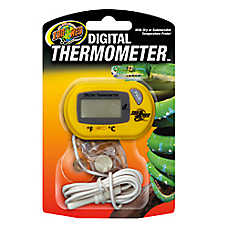A Set-up Guide for New Sand Boa or Rosy Boa Pets

In this Article
Five things to know about sand or rosy boas
- They can live up to 15 years
- They grow to be over 3 feet long
- They prefer to live alone
- They are creatures of the night
- They’re best for experienced pet parents
Your boa’s habitat
Your boa should live alone in a glass terrarium that’s at least 20 gallons in volume and has a locking screened lid.
Decorationg your boa’s habitat
- Line the bottom of the terrarium with 2 inches of aspen reptile bedding or reptile sand. Scoop the poop frequently and treat your snake to fresh bedding once a month.
- Provide a wide, shallow water dish for your snake.
- Stock the habitat with lots of branches, living or artificial, for hiding and climbing.
- Add a rock or wooden hiding place on the side of the terrarium that will be the cool side.
- Make sure nothing in the tank will wobble or topple if your pet slithers over it.
Heat & lights
- The terrarium should have a warm side and a cool side. During the day, boas like temperatures between 85 and 90 degrees Fahrenheit on the warm side of the tank, and between 75 F and 80 F on the cool side. At night, the whole tank should be between 65 F and 70 F. A heat bulb or ceramic heat emitter will keep the warm side at the right temperature. Use a thermometer at each end to help you regulate the habitat overall.
- The habitat’s humidity should be between 30% and 50%. Use a hygrometer — a device that measures humidity — to keep track.
- Boas require lighting that mimics day and night. Use a fluorescent bulb in the habitat to mimic daylight for 12 hours a day.
- At night, switch to a night-specific bulb so you can watch your boa with minimum disturbance.
Help keep your sand or rosy boa healthy
Try not to handle new boas for three or four days to give them a chance to get acclimated to their new surroundings. Whether your boa is new or settled-in, be sure to contact a vet if you notice any of these symptoms of illness or distress:
- More time spent hiding
- Eating or drinking less; weight loss
- Shedding problems
- Discolored skin
- Discharge from the eyes, nose or mouth
- Runny droppings for more than two days
If you have questions about the health of your boa, talk to a PetSmart store associate or a veterinarian who knows snake health.
PETSMART CARES:
Pets purchased at PetSmart are part of our exclusive Vet Assured™ program, designed by PetSmart veterinarians to help improve the health and well-being of our pets. Our vendors meet a high standard in caring for pets and screening them for common illnesses. This program also includes specific standards for in-store pet care.
The PetSmart Promise: If your pet becomes ill during the initial 14-day period, or if you’re not satisfied for any reason, PetSmart will gladly replace the pet or refund the purchase price.


